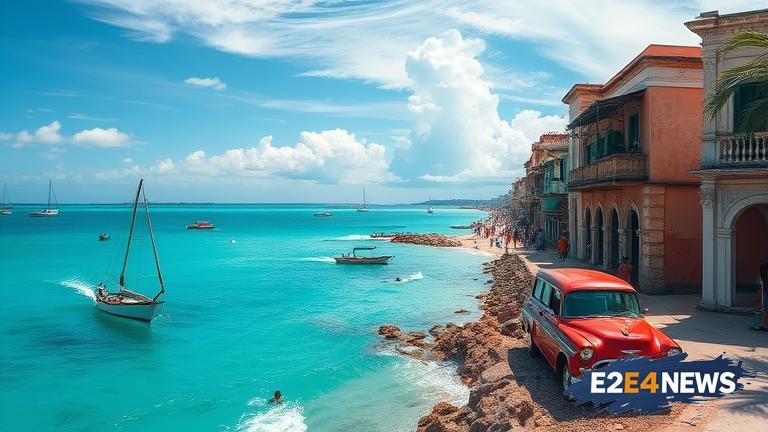Cuba’s tourism industry has been experiencing a significant surge in recent years, with a record number of visitors flocking to the island nation. Despite facing numerous challenges, including a struggling economy and limited infrastructure, Cuba has managed to attract a growing number of tourists. The country’s unique culture, rich history, and stunning natural beauty have made it an attractive destination for travelers from around the world. In 2019, Cuba welcomed over 4.2 million visitors, a 10% increase from the previous year. The majority of these visitors came from Canada, the US, and Europe. The growth in tourism has been driven in part by the easing of travel restrictions between the US and Cuba, which has made it easier for American citizens to visit the island. Additionally, investments in infrastructure, including new hotels and resorts, have helped to improve the overall tourist experience. Cuba’s tourism industry is also benefiting from the country’s efforts to promote sustainable tourism and eco-tourism. The Cuban government has implemented a number of initiatives aimed at reducing the environmental impact of tourism, including the development of eco-lodges and the promotion of environmentally-friendly practices. The growth in tourism has also had a positive impact on the local economy, with many Cubans benefiting from the increased demand for goods and services. However, the industry still faces a number of challenges, including a shortage of skilled workers and a lack of investment in certain areas. Despite these challenges, Cuba’s tourism industry is expected to continue growing in the coming years, driven by the country’s unique attractions and the increasing demand for travel to the island. The Cuban government has set a target of attracting 5 million visitors per year by 2025, and is investing heavily in infrastructure and marketing efforts to achieve this goal. The growth in tourism has also led to an increase in foreign investment in the sector, with a number of international companies investing in hotels, resorts, and other tourism-related projects. Cuba’s tourism industry is also benefiting from the country’s rich cultural heritage, with many visitors drawn to the island’s vibrant music, dance, and art scene. The country’s capital, Havana, is a particular draw for tourists, with its stunning architecture, lively nightlife, and rich history. Other popular destinations in Cuba include the beach resort of Varadero, the colonial city of Trinidad, and the scenic town of Viñales. The Cuban government is also working to promote tourism in other areas of the country, including the eastern provinces of Holguin and Santiago de Cuba. Overall, Cuba’s tourism industry is experiencing a period of significant growth and development, driven by the country’s unique attractions and the increasing demand for travel to the island. With its rich culture, stunning natural beauty, and warm hospitality, Cuba is an attractive destination for travelers from around the world. The country’s tourism industry is expected to continue growing in the coming years, driven by the government’s efforts to promote sustainable tourism and eco-tourism, and the increasing demand for travel to the island.
